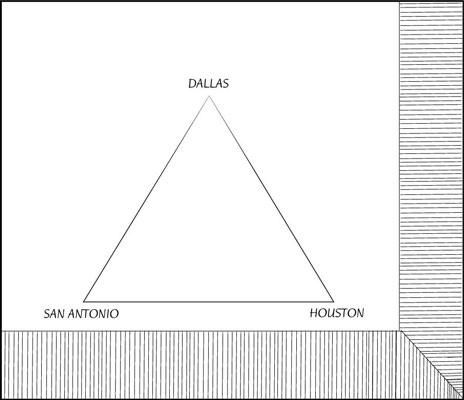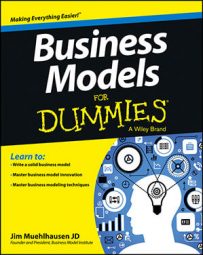The concept of a business model may be new, but the underlying business dynamics aren’t. The East India Trading Company and Henry Ford had good business models, whether they were called business models or not. For many years, businesspeople have asked themselves two key questions:
Is this a unique concept?
Can I make money selling it?
If the answer was yes to both questions, they moved ahead.
Back-of-the-napkin business model
Countless stories exist of great business models conceived over cocktails and jotted down on the back of a napkin. The problem with all these back-of-the-napkin stories is that they make it seem like creating a great business model is as simple as a quick doodle.
The businesspeople who created the strong models in their heads and jotted down the gists on a napkin were managing hundreds of business variables in their heads. These folks were savvy enough, or lucky enough, to sift through all of them and come up with a gem of an idea.
The problem with the back-of-the-napkin method is that it usually gets oversimplified to mean, “Can I make money with this unique concept?” That’s a great start for a business model, but it’s not a complete business model.
The most famous back-of-the-napkin story is Southwest Airlines. As the story goes, Herb Kelleher and one of his law clients, Rollin King, jotted down the concept that became Southwest Airlines on a cocktail napkin in a San Antonio restaurant. This figure shows you what this famed napkin may have looked like.

Imitate a Strong Business Model
Imitation may be the sincerest form of flattery, but it’s also a common source of business models. Many business models are simply a facsimile of another known model. This imitation comes in two flavors: literally copying the model and copying the model but moving it to a different industry.
Literally copying: Joe works for a successful plumbing company. Joe has always wanted to start his own plumbing business, and after 15 years at his current job, he has learned a great deal about his employer’s business model. When Joe breaks away and starts his own plumbing company, guess what his most likely business model is?
The same business model as his old employer. Perhaps Joe makes a change or two, but it’s highly likely that the central tenants of Joe’s business model are exactly the same as his old employer’s.
Moving to a different industry: In the second situation, the strong business model of a company is emulated and moved into a different market. For instance, many businesses saw the success of Henry Ford’s assembly line and took portions of his business model and incorporated them in a new industry. Isn’t McDonald’s just an assembly line for hamburgers?
Fall into a business model
Sometimes businesspeople just fall into a model. Either they don’t give the business model any thought and just proceed to open the business, or one thing leads to another, and before they know it they have a business model.
It’s always easy to assume that planned activities are more successful than unplanned activities, but you never know. Many great inventions were discovered as a failed experiment in search of something else.
A few prominent high-tech companies like Twitter are proactively delaying some business-model decisions and falling into their business model. Twitter has found great success attracting users but hasn’t yet figured out how to turn the popular brand into a profitable business model.

